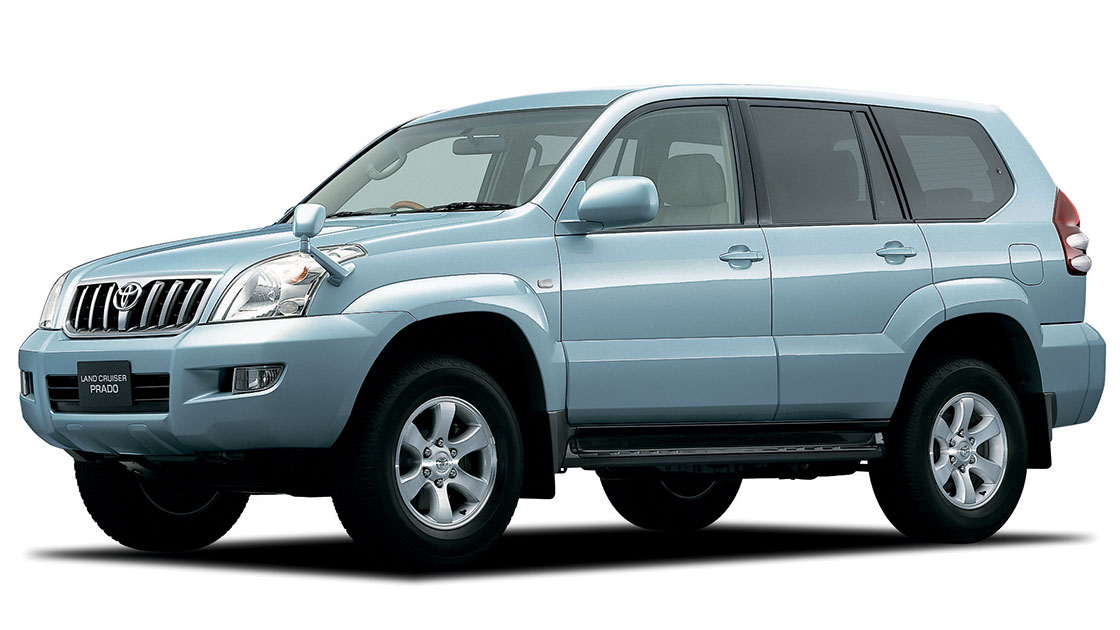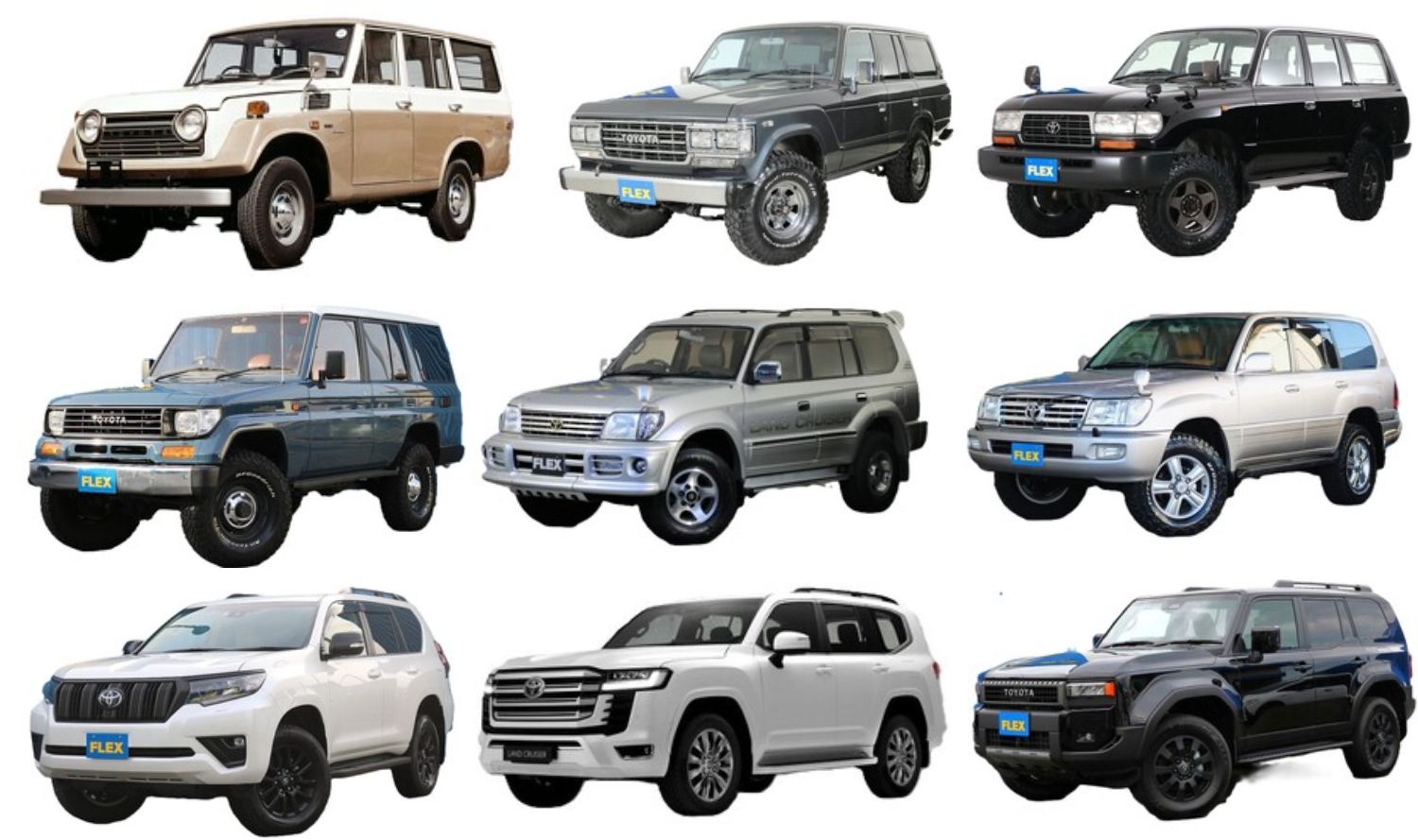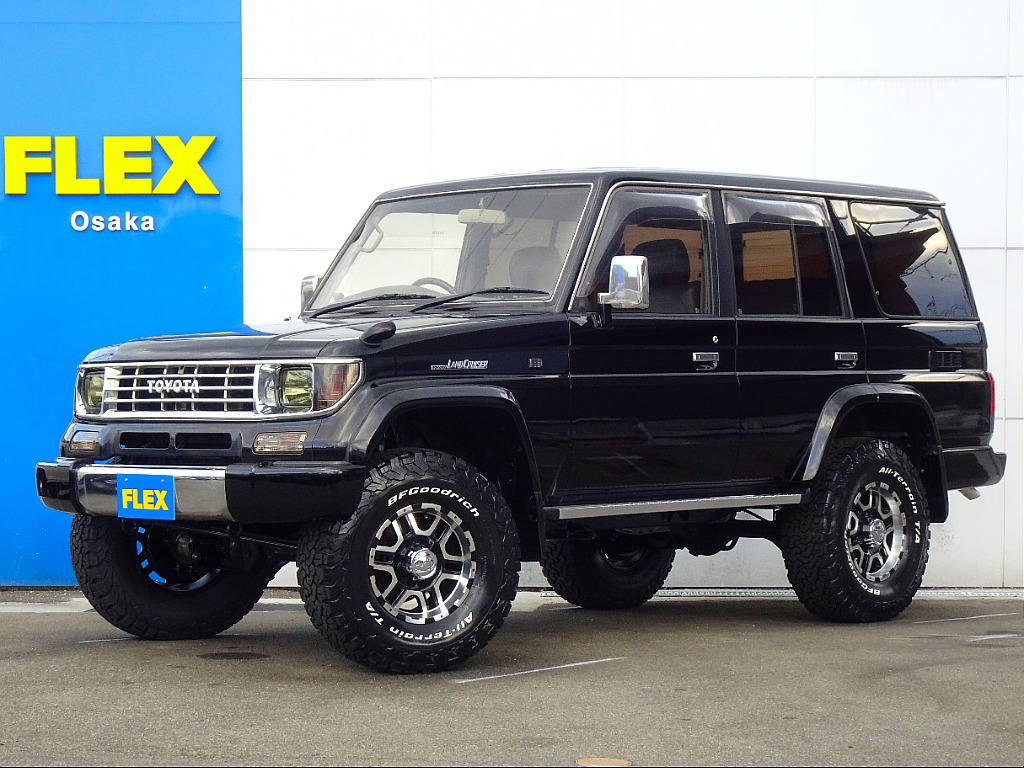How Land Cruiser’s technology and sales strategy helped influence its design transitions
The design of a car greatly influences its sales. For this reason, many talented designers create prototypes for evaluation from the manufacturer which are then sent back for refinements or new designs until it is approved. Depending on the car, well-known designers and design companies may work from anywhere in the world to design a vehicle. In Japan, automakers generally decide on in-house designs.
Originally, there were no in-house designers in Japan. The Land Cruiser used the “world worksite” concept, and the function was the focus, and design was secondary. For this reason, early Land Cruiser designs were conceived and decided by body designers.
Later in the 1960s, a department was created in the Land Cruiser development group to oversee design, and the work of designers began to attract attention. At that time, the automobile export industry, which is a pillar of the Japanese economy, began to take off in earnest, during high economic growth. Amid a boom in households owning one car, the Model 55 was the first Land Cruiser whose shape was decided by a designer.
Here, we will explain the formation of the Land Cruiser form from the beginning of the design, when the concept of “design” was added to the development theme, to the present day.
The Land Cruiser body design improves thanks to advanced press technology

The Land Cruiser 40 was made by rulers and compasses
From the first Land Cruiser built in 1951 to the 40 series released in 1960 through the 20 series, the shape of the Land Cruiser was determined by arranging the components. The chassis was first drawn on a drawing board with the size determined by the size of the engine, chassis, and tires.
The lines of the body were then drawn. In the days when computer technology such as CG did not exist, T-rulers, cloud-shaped templates, and compasses were used for drafting. The person in charge of this work was Arakawa Sheet Metal Industry (currently Toyota Auto Body), which was commissioned by Toyota to finish the prototype bodies almost entirely by hand.
At that time, the Land Cruiser was like a small truck, and the only tools for rendering drawings were rulers and compasses, so naturally, the body was based on straight lines. In addition, because press technology was low at the time, they had no choice but to minimize the parts that required manual work and create many flat surfaces. Complicated shapes were avoided to enable mass production to meet the rapidly expanding demand for Land Cruisers in the global market.
The design that started with functionality is still appealing
The Land Cruiser 40, which was produced under these conditions, also had parts with slightly curved or curved surfaces like the front fender and hardtop car roof. The curved front fender, inherited from the Land Cruiser 20, was a reflection of the designer’s desire to create a form that was appealing to the general buyers, even though it took time and effort to manufacture.
In addition, the roof is domed, so there is plenty of headroom even for those who wear hard hats. Because of its large curvatures and wide areas, press technology could not keep up with it. Toyota chose to make the roof from FRP.
The Land Cruiser 40 was released in 1960, but after Arakawa Sheet Metal Industry changed its name to Arakawa Auto Body Industry and a new factory (Yoshiwara Factory) was built in 1962, its mass production gained momentum.
In the early Land Cruiser 40, when there were no large press machines, the hood was two separate left and right parts bolted together. However, the body shape of the Land Cruiser 40 did not change until the Land Cruiser 70. As the development of production technology gradually accelerated, new press machines were introduced and the assembly work process was improved. Above all, it was because of its shape that it garnered fans worldwide.
The Land Cruiser Side Story / Assembly company name change and merger
The Land Cruiser’s chassis is produced at Toyota Motor’s head office plant, mainly based on parts collected from partner companies (suppliers) in Aichi Prefecture, which is in the Chūbu region of Honshū. The body was produced by Arakawa Shatai Kogyo (currently Toyota Auto Body), the chassis was added, and the final assembly was contracted out.
In recent years, as the Land Cruiser family, including Lexus, has increased, the division of labor has progressed, and Toyota Motor’s Tahara Plant (Aichi Prefecture) and Hino Motors’ Hamura Plant (Tokyo) have also rolled vehicles off the production line.
At the time the Land Cruiser 40 was introduced, body design and assembly were done by Arakawa Sheet Metal Industry, but the company later changed its name from Arakawa Auto Body Industry to Araco as the business scale expanded, and in 2004 the vehicle business was changed to Toyota Auto Body after a merger. Therefore, the design of the current Land Cruiser is a joint effort between Toyota Motor Corporation and Toyota Auto Body.
Various perspectives on the successive Land Cruiser designs

Designers were involved in designing the Land Cruiser 55
Toyota realized during the latter half of the Land Cruiser 40’s era that they needed to start including more passenger car elements within the Land Cruiser to meet the changing global demands. Rather than change the workhorse LC40, they decided to develop the Land Cruiser 55.
At the time, North America was producing station wagons, modified trucks, and vans that all could be used as passenger cars. That made North America the main target for the Land Cruiser 55, and Toyota brought a designer on board for the first time.
The major concern for Toyota was how to incorporate Land Cruiser’s rugged stability into the body of a station wagon.
There were many design challenges when it came to the Land Cruiser 55 like the available production technology. They needed to incorporate the front fender into the body without leaving a trace, unlike the Land Cruiser 40 where the front fender was separate from the body. Because of improved production technology, they were able to create a bold press line from the height of the front of the fender to the rear in the LC55. The long roof is also a product of a large press, as is a discreet, yet elegant lip-shaped overfender.
However, the molding around the hood and rear gate presented the designer with problems. The front end of the hood has a large bend, and the rim of the top of the headlamp must be recessed. The rear gate is a tilt-type with a built-in power window, and the window surface is designed to be recessed from the body, resulting in a complex and detailed surface configuration. In the process of realizing this project, there seemed to be constant friction between designers.
The Land Cruiser 70 can be knocked down easily due to its simple line and surface configuration

Since the Land Cruiser 55, Toyota’s design department has grown in size, expanding its scope of work while deepening cooperation with other departments, such as those in charge of body design. And, these designers were faced with significant changes when they switched from the Land Cruiser 40 to the Land Cruiser 70.
One of the reasons why the Land Cruiser 40 continued to be manufactured and was so popular with fans was because it did not change in 24 years. The fans liked it the way it was.
During that time, however, body development technology had improved dramatically, and the number of newly added designers had grown significantly. The Land Cruiser 40 was designed to meet modern times that included low press technology and manual labor, which restricted the use of curves and curved surfaces. That’s why it was surprising when the Land Cruiser 70, which appeared in 1984, emphasized straight lines and planes. The press technology had been improved to make it easy to manufacture a round shape, but the Land Cruiser 70 still had sharp edges and deep press lines on the sides of the body emphasized its rugged toughness.
In the Land Cruiser 70 era, automation was the key to the assembly plant. Welding was also automated by robots, but the Land Cruiser 70 risked leaving the manual assembly process. This is because, depending on the export destination country, it was required that the vehicle be shipped in a semi-completed state (KD: knockdown) to be assembled locally, rather than in a complete state.
One of the reasons why the Land Cruiser 70 has a body that uses many straight lines and planes is that it can be easily assembled in the export destination country. The purpose of the knockdown varies depending on the export destination country, but in the case of the Land Cruiser, the main purpose was to keep the local vehicle price down. They tried to keep the local price down by reducing the cost of production and transportation in Japan, and by lowering the tariffs of the other countries.
The Land Cruiser 90 Prado emphasizes a newer, sportier shape

The Land Cruiser 90 Prado designers did not know how the market would react to the new design. The Land Cruiser Prado, including the 90 Prado, was an entry SUV that was designed to get people to move from passenger cars to roomier alternatives. Toyota’s major mission was to break down the image of freight/commercial vehicles and expand the user base. However, by sharing a lot with the Land Cruiser 70 (van), the Land Cruiser 70 Prado was unable to break away from its old image and its popularity was only half-hearted.
Then, in 1996, the Land Cruiser 90 Prado was completely changed based on the failure of the 70 Prado and succeeded in defeating the Mitsubishi Pajero (Mitsubishi Montero in the North American market), which had been reigning as the best-selling 4WD until then. Toyota’s intent in designing the Land Cruiser 90 Prado was clear. The outline of the body resembled the Pajero (Montero), and the details included a new design. It must have been humiliating for the developers to make it look like a car that was already selling well, but Toyota was unable to bridge the gap to new customers due to its previous defeats.
The body design of the Land Cruiser 90 Prado is characterized by the large front and rear overfenders that are continuous with the plastic panels on the body sides, and the press line creates a three-dimensional curved surface running from the front fender to the rear. The overfenders are designed to portray a stockiness that rivals that of the Pajero (Montero). The press line successfully blends in the edges with an emphasis on a sporty appearance.
The Land Cruiser 120 Prado utilizes a European designer for the first time

The Land Cruiser 90 Prado succeeded in spreading the Prado name all over the world, but Toyota was still not satisfied. This is because the regions where the 90 Prado was successful were only the markets where Land Cruisers had been selling in large numbers already, such as Oceania and Asia.
Mid-sized 4WD vehicles, such as the Land Cruiser 90 Prado, were popular in Europe. Toyota was looking to further increase sales while promoting brand awareness in Europe. For this reason, the Land Cruiser 120 was designed in Europe.
Toyota Europe Design Development (commonly known as ED Square), which was established in Nice, France in November 1998, was in charge of this project. The Land Cruiser 120 Prado, the first European design in the history of the Land Cruiser, has a sportier design that emphasizes the dynamism of the overfenders, the lines and surfaces are self-respecting, and overall, it looks like it has been completely upgraded.




